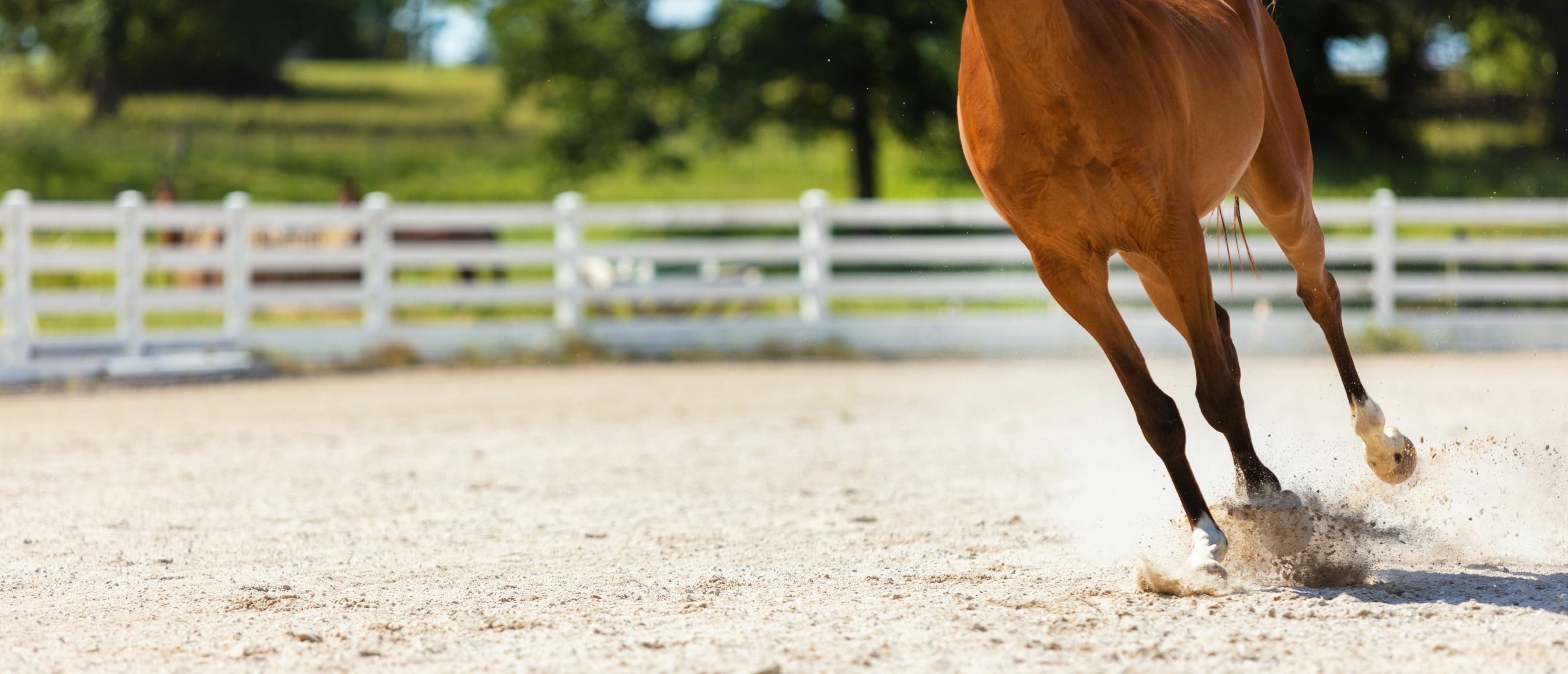
Vertical Imbalance
The shift of the center of mass to one side of the horse’s body can cause the horse to walk out of balance, with vertical imbalance.
You can see this very well when the horse makes a turn or moves on the circle.

The increased weight on the inside shoulder makes the horse lean to the inside and become vertically out of balance.
This vertical imbalance is one of the 8 dimensions of natural asymmetry.
You can easily see it at liberty: the horse will bring the head to the outside as a counter balance.
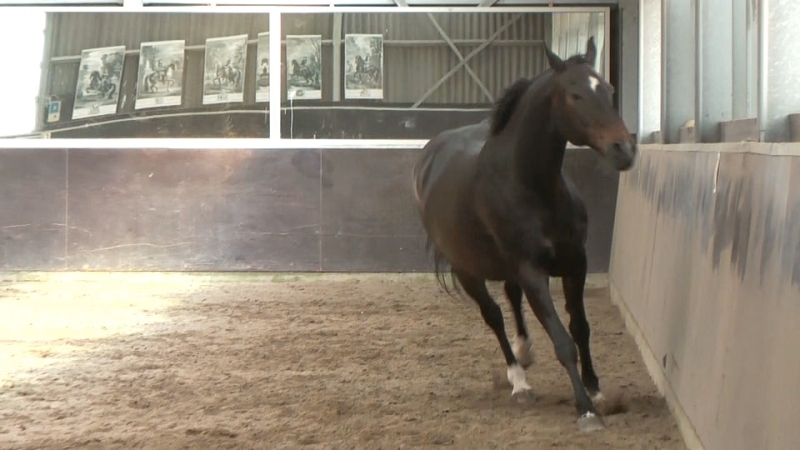
Symptoms of vertical imbalance
Horse who move in vertical imbalance also tend to speed up.
Because when a fast-moving horse loses its vertical balance, then it loses balance in its entire body.
The “red” horse in the drawing below can only keep its balance by speeding up.
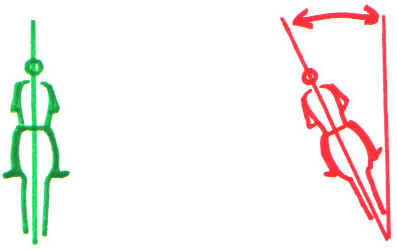
Compare this with a motorcycle: the higher the speed, the more it leans to the inside of the curve.

Vertical imbalance while leaning in
On the pictures below, you see the center of mass is going towards the inside front leg and the horse leans in. The horse is therefore vertical out of balance:
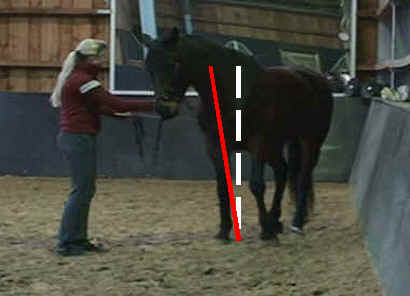
Vertical balance
The horse on the pictures below has an equal distribution of the weight on the front legs and is therefore vertical straight:
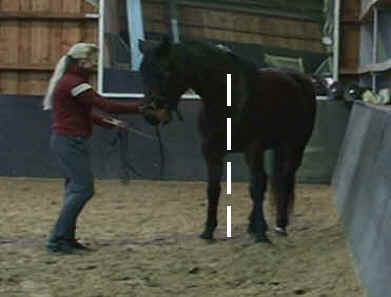
Vertical imbalance while leaning out
Now the center of mass of the horse on the pictures below is going towards the outside front leg; the horse leans out. The horse is therefore vertical out of balance:
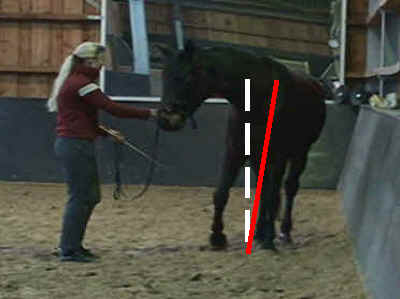
This also shows how important it is that we are able to recognize the vertical imbalance of the horse, so we can rebalance our horse.
What about your horse?
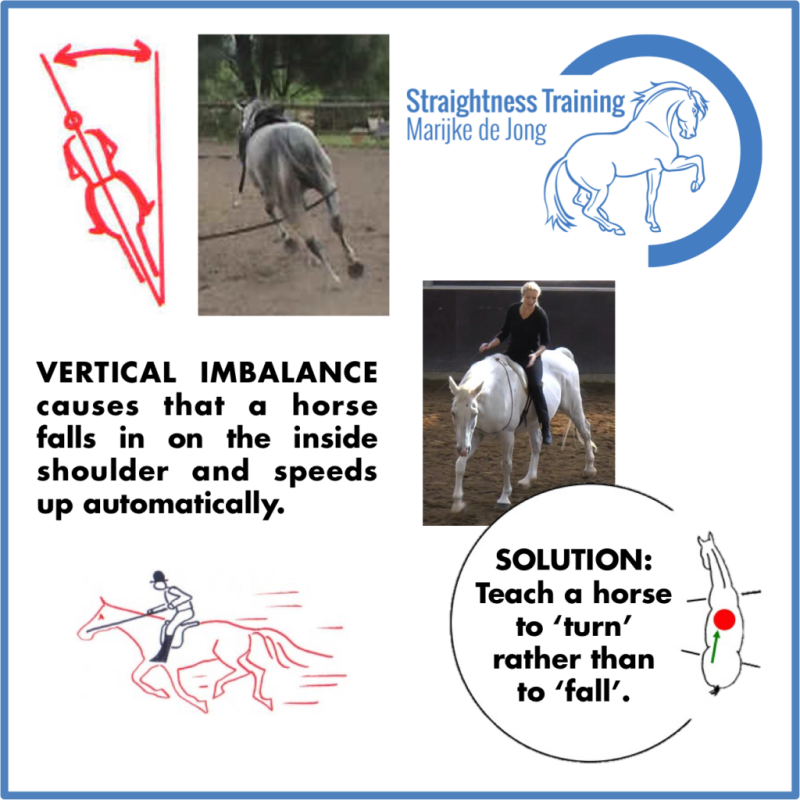
- Does he lean in on his shoulder?
- Especially in canter?
- Does he speed up automatically, but unwanted, in a turn or on a circle?
- Do you have the feeling that you have to sit on the outside of the back of the horse, otherwise he will fall?
If you would like to help your horse to find a better balance and to calm down, Straightness Training is a great support for you.
Your next STep
You’ve now learned about natural asymmetry, which is the hidden force behind many struggles.
Straightness Training helps you end your struggles once and for all, and create balance and harmony with your horse.
Join the FREE Straightness Training Masterclass and learn exactly how to create real change:

